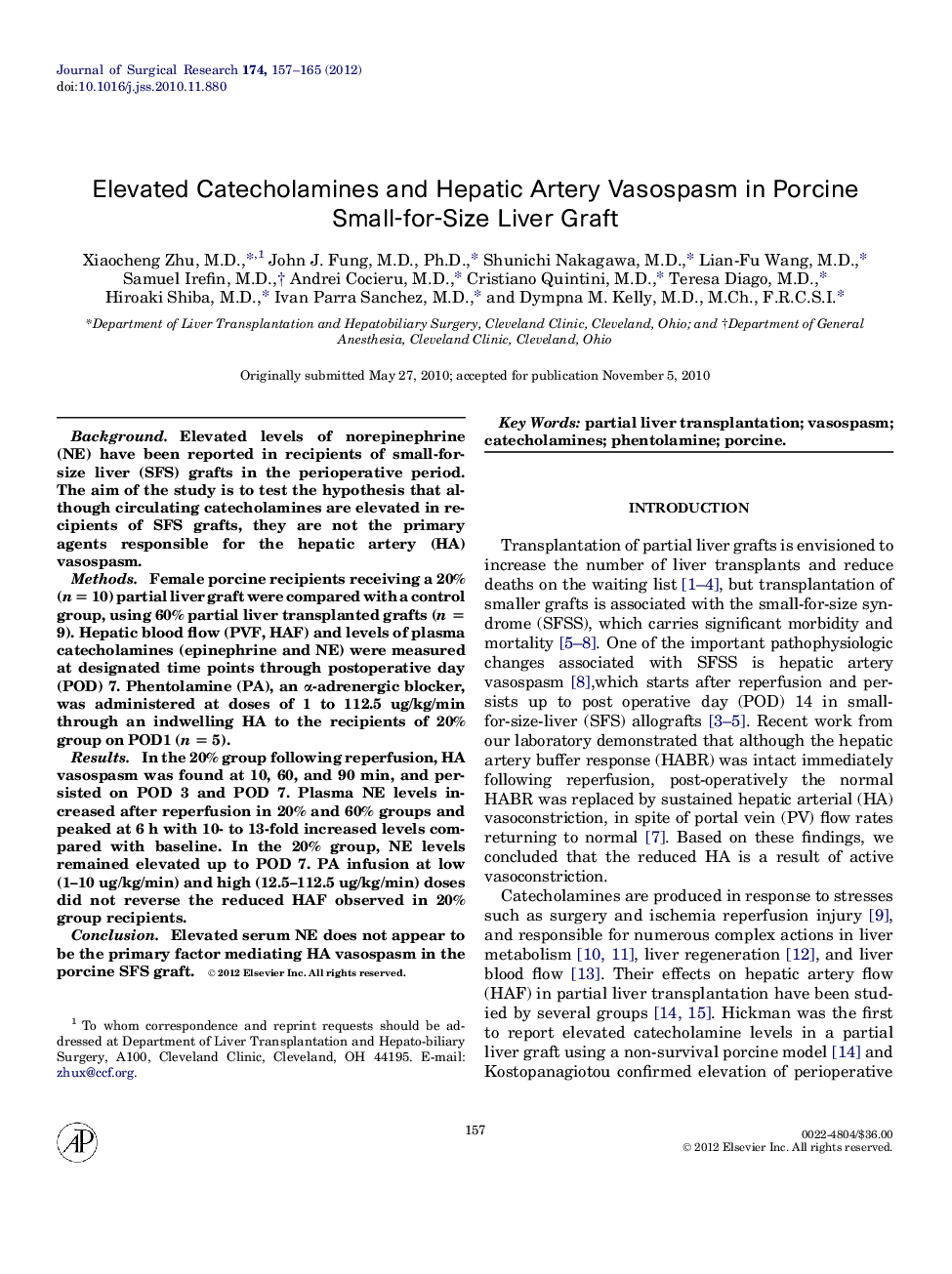| Article ID | Journal | Published Year | Pages | File Type |
|---|---|---|---|---|
| 4301801 | Journal of Surgical Research | 2012 | 9 Pages |
BackgroundElevated levels of norepinephrine (NE) have been reported in recipients of small-for-size liver (SFS) grafts in the perioperative period. The aim of the study is to test the hypothesis that although circulating catecholamines are elevated in recipients of SFS grafts, they are not the primary agents responsible for the hepatic artery (HA) vasospasm.MethodsFemale porcine recipients receiving a 20% (n = 10) partial liver graft were compared with a control group, using 60% partial liver transplanted grafts (n = 9). Hepatic blood flow (PVF, HAF) and levels of plasma catecholamines (epinephrine and NE) were measured at designated time points through postoperative day (POD) 7. Phentolamine (PA), an α-adrenergic blocker, was administered at doses of 1 to 112.5 ug/kg/min through an indwelling HA to the recipients of 20% group on POD1 (n = 5).ResultsIn the 20% group following reperfusion, HA vasospasm was found at 10, 60, and 90 min, and persisted on POD 3 and POD 7. Plasma NE levels increased after reperfusion in 20% and 60% groups and peaked at 6 h with 10- to 13-fold increased levels compared with baseline. In the 20% group, NE levels remained elevated up to POD 7. PA infusion at low (1–10 ug/kg/min) and high (12.5–112.5 ug/kg/min) doses did not reverse the reduced HAF observed in 20% group recipients.ConclusionElevated serum NE does not appear to be the primary factor mediating HA vasospasm in the porcine SFS graft.
